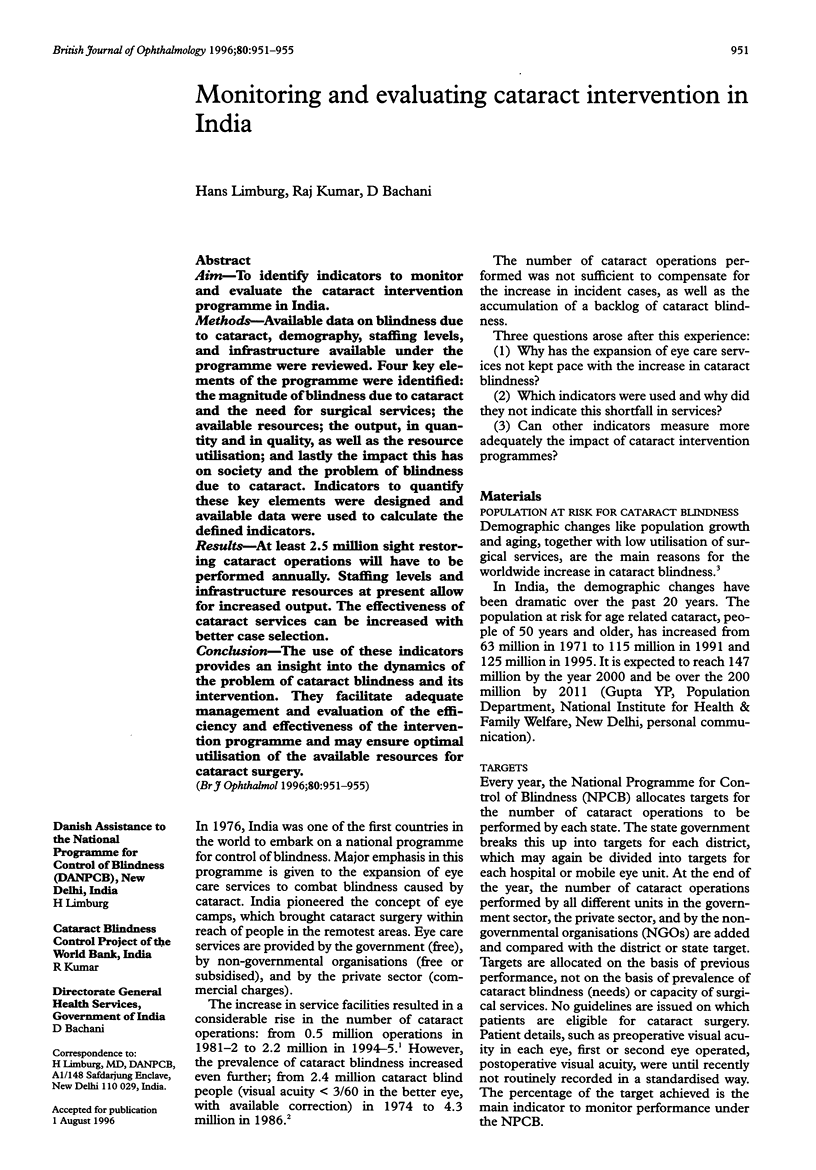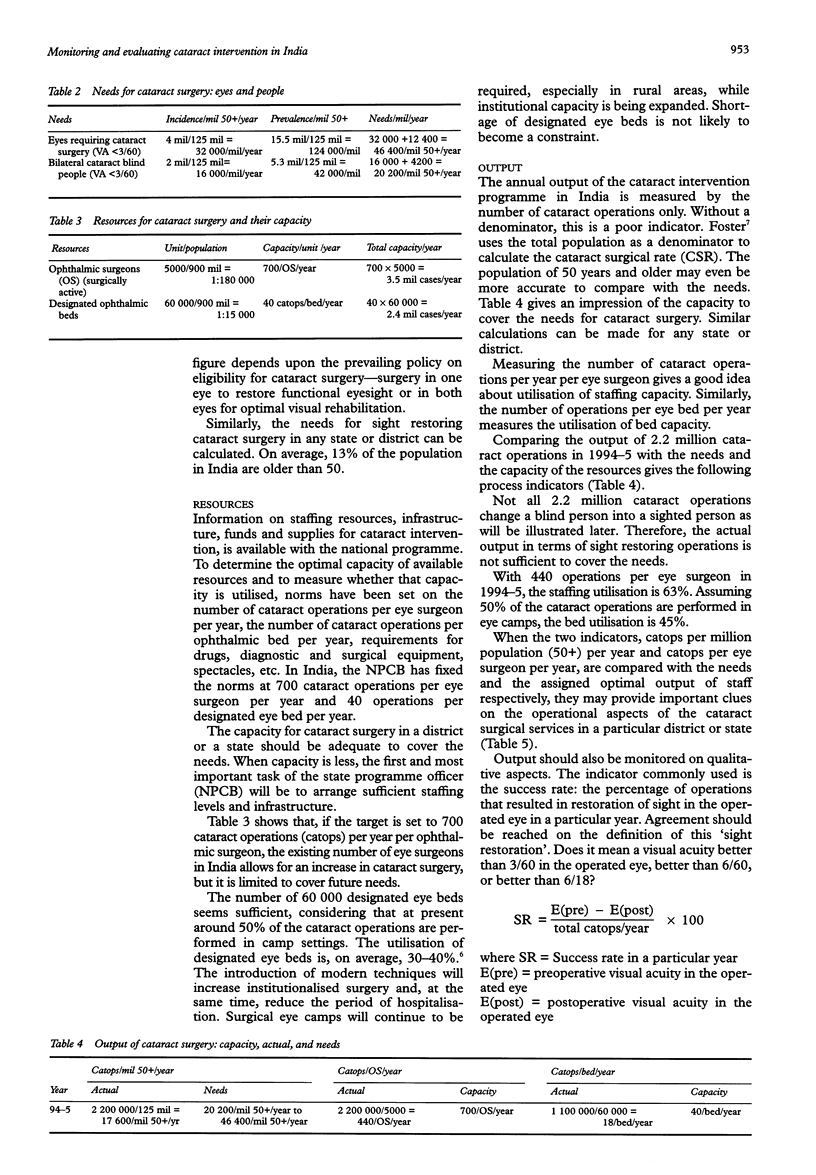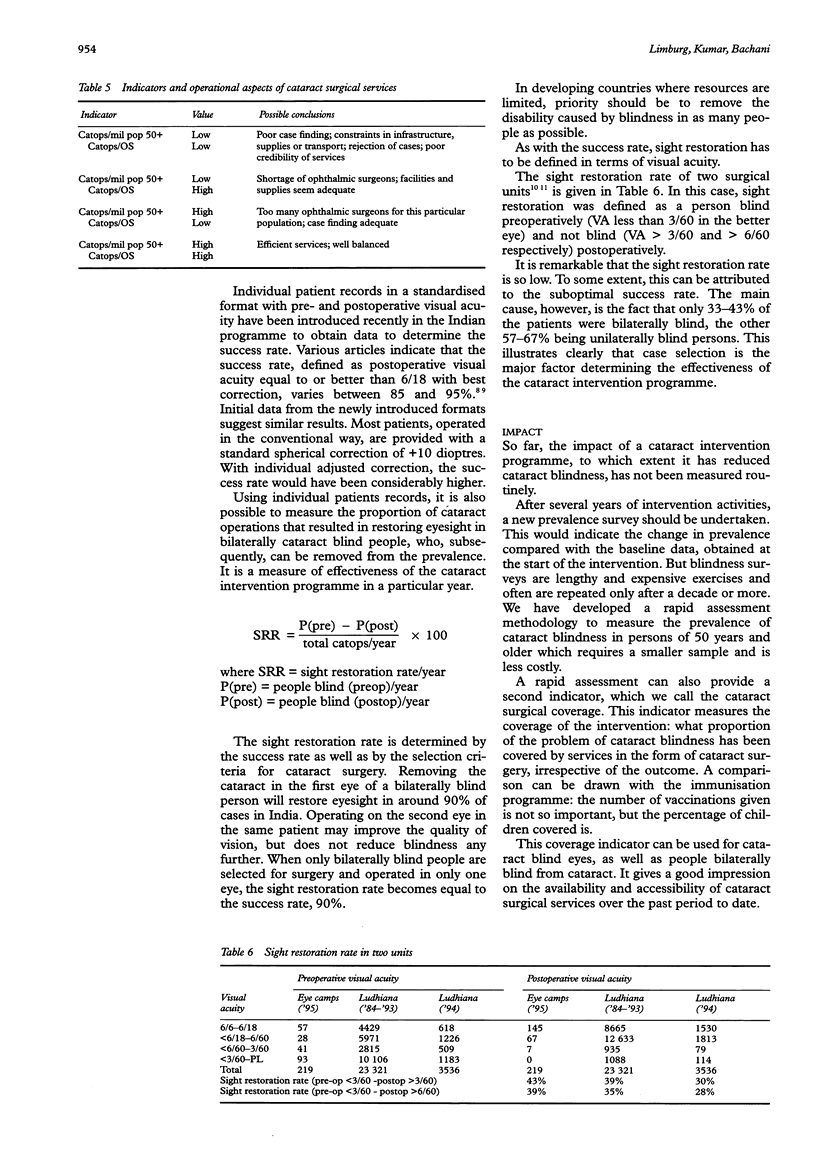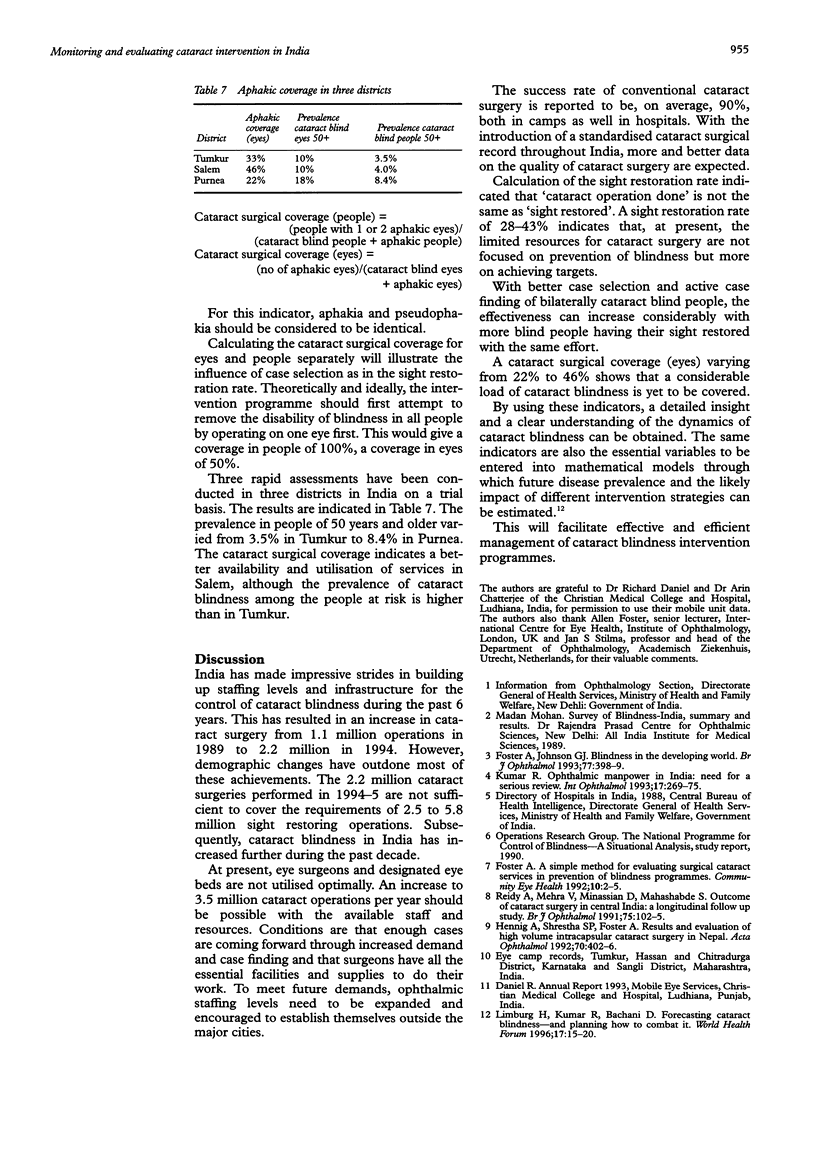Abstract
AIM: To identify indicators to monitor and evaluate the cataract intervention programme in India. METHODS: Available data on blindness due to cataract, demography, staffing levels, and infrastructure available under the programme were reviewed. Four key elements of the programme were identified: the magnitude of blindness due to cataract and the need for surgical services; the available resources; the output, in quantity and in quality, as well as the resource utilisation; and lastly the impact this has on society and the problem of blindness due to cataract. Indicators to quantify these key elements were designed and available data were used to calculate the defined indicators. RESULTS: At least 2.5 million sight restoring cataract operations will have to be performed annually. Staffing levels and infrastructure resources at present allow for increased output. The effectiveness of cataract services can be increased with better case selection. CONCLUSION: The use of these indicators provides an insight into the dynamics of the problem of cataract blindness and its intervention. They facilitate adequate management and evaluation of the efficiency and effectiveness of the intervention programme and may ensure optimal utilisation of the available resources for cataract surgery.
Full text
PDF




Selected References
These references are in PubMed. This may not be the complete list of references from this article.
- Foster A., Johnson G. Blindness in the developing world. Br J Ophthalmol. 1993 Jul;77(7):398–399. doi: 10.1136/bjo.77.7.398. [DOI] [PMC free article] [PubMed] [Google Scholar]
- Hennig A., Shrestha S. P., Foster A. Results and evaluation of high volume intracapsular cataract surgery in Nepal. Acta Ophthalmol (Copenh) 1992 Jun;70(3):402–406. doi: 10.1111/j.1755-3768.1992.tb08587.x. [DOI] [PubMed] [Google Scholar]
- Kumar R. Ophthalmic manpower in India--need for a serious review. Int Ophthalmol. 1993 Oct;17(5):269–275. doi: 10.1007/BF01007795. [DOI] [PubMed] [Google Scholar]
- Limburg H., Kumar R., Bachani D. Forecasting cataract blindness--and planning to combat it. World Health Forum. 1996;17(1):15–20. [PubMed] [Google Scholar]
- Reidy A., Mehra V., Minassian D., Mahashabde S. Outcome of cataract surgery in central India: a longitudinal follow-up study. Br J Ophthalmol. 1991 Feb;75(2):102–105. doi: 10.1136/bjo.75.2.102. [DOI] [PMC free article] [PubMed] [Google Scholar]


